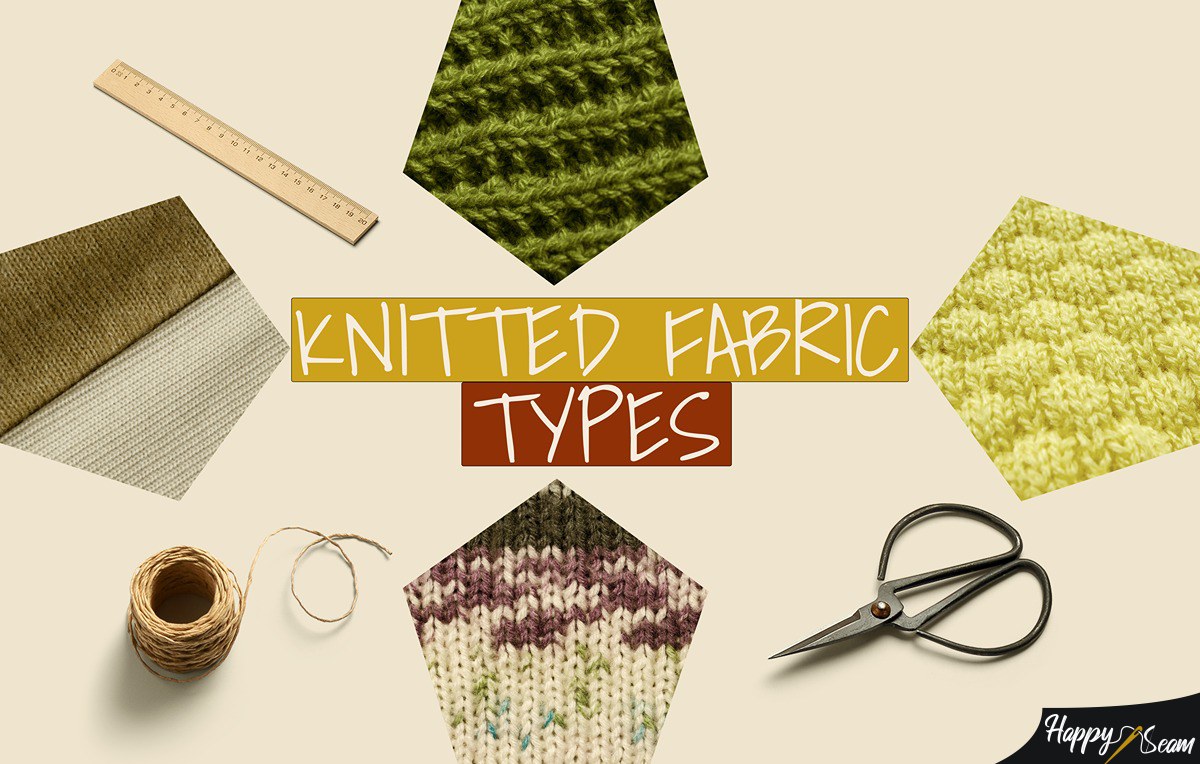Knitted fabrics are used in the making of various clothing items, from swimwear to sweaters. However, deciding which knitted fabric type is for the warmest and comfiest sweater made of, or which knitted type is the most appropriate for a particular knitting project that you’re planning to perform, can sometimes get hard. So, the question is: Why is this so?
Key Takeaways
- Knitted fabrics are used to make many different clothing items, such as sweaters, cardigans, blouses, dresses, pants, skirts, T-shirts, hats, shawls, gloves, etc.
- A Knitted fabric might look close to a woven fabric but they are completely different from one another, so don’t mistake woven fabrics for knitted fabrics.
- They come in various types, each having its own properties and uses.
- Being simple and easy to make, Jersey knit fabrics are one of the most commonly used fabrics for making T-shirts, underwear, and dresses.
- Knitted fabrics are a bit hard to sew and some are prone to unraveling and pilling.
The 10 Most Popular Types of Knit Fabrics
Deciding which knitted fabric type would be the most appropriate for a particular clothing item or knitting project can get difficult since there are a lot of such fabrics available on the market, each with its own special features and uses.
So, to help you pick the right type of knitted fabric that can meet your needs, in what follows, I’ve presented the most popular ones and explained their uses and properties.
1. Rib Knit Fabric

What makes this type of knitted fabric recognizable is its elevated vertical lines that can be found on both sides. It’s created with purl and knit stitches by using a round or flatbed knitting machine.
This textile is thick, soft, and elastic, which makes it ideal for making necklines, lower edges, and cuffs on cardigans and sweaters. Additionally, it can be used for making rugs, and neckbands on T-shirts and entire pieces of clothing, such as tank tops and camisoles.
2. Intarsia Knit Fabric
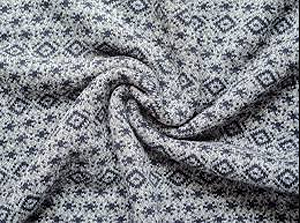
This knit fabric is usually used in the making of clothing items, such as sweaters, shirts, shawls, socks, blouses, and gloves. It can also be used to make decorative cushion covers and bags.
What characterizes this fabric is patterns in different sizes and shapes created by knitting yarns in various colors. Additionally, different yarns can be used provided that there’s not a big difference between the thickness and weight of each of them.
3. Jersey Knit Fabric

Unlike most knitted fabrics, fabrics sewn with the Jersey stitch are characterized by distinct vertical lines on the face side and horizontal lines on the underside. In addition to being simple, this stitch is also quick and commonly used. Moreover, it’s often used for making modern patterned fabrics as it allows for changes when various yarns are used.
This knitted fabric is also known as flat or single knit as it’s produced by knitting purl and knit stitches with only one needle. It’s typically used for making dresses, T-shirts, tops, and underwear.
However, this knitted fabric has a few weaknesses:
- If elastane isn’t included in the material, it’s not very stretchy
- It can shrink if it’s not handled or maintained properly
- If a yarn breaks or gets unintentionally cut during the knitting process, this knitted fabric can easily “run”
4. Interlock Knit Fabric

At first glance, textiles made with the interlock stitch may look like jersey knit fabrics. However, if you look more closely at this knit fabric, you can easily see that it’s different from a single knit fabric in the following ways:
- Its thickness and weight are greater
- It’s reversible
- It’s manufactured by using 2 needles, whereas only one needle
- It is used in the production of jersey knit fabrics
- It’s less likely to curl or unravel it’s more stable
The most common clothing items that the interlock fabric is used for making are skirts, sweatshirts, tops, dresses, and pants.
5. Purl Knit Fabric
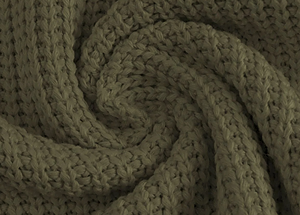
Just like most types of knitted fabrics, fabrics made with the purl stitch have the same appearance on the face side and the underside.
This fabric is made by knitting purl and knit stitches. However, although it’s reversible, stretchy, and thicker than Jersey knitted fabrics, it has beautiful patterns, and its edges lie flat, it’s not very used since it has the tendency to unravel.
Nevertheless, it might be useful for anyone interested in buying clothes made of purl knit fabric to know that the most common clothing items manufactured from this material are underwear, children’s clothing items, knitted clothing, and loose and large sweaters.
6. Fleece Knit Fabric

If you’re looking for a type of knit fabric that’s warm and comfortable, can be stable or elastic, has a deep texture, and lasts for longer, fleece knit fabric is the perfect choice for you since it fits this description.
This type of fabric is typically made from polyester or cotton, but it can also be made from spandex, bamboo, or wool.
What makes this knitted fabric stand out from the rest is that it dries fast, which is why it’s often used for making sportswear. Additionally, it’s used for manufacturing sweaters, vests, blankets, jackets, scarves, and gloves.
7. Sweater Knit Fabric
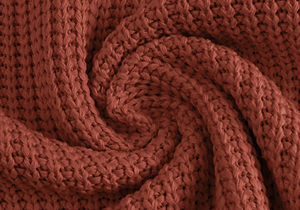
As you may have already guessed, this type of fabric is typically used for manufacturing sweaters, including cardigans. Sweater knit fabrics aren’t very stretchy. However, clothing items made with the sweater knit are comfortable and smooth and feel stable when you’re wearing them. There are various types of sweater knit fabrics and they’re available in different textures and colors.
8. Double Knit Fabric
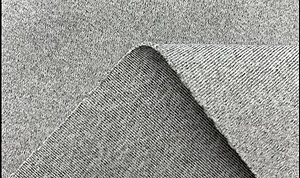
This is another type of knit fabric made with two needles. Besides being lightweight, double knit fabric is stable and thick and they look identical on the face side and the underside, although this may not always be the case. One more important property double knit fabrics show is shape retention as they don’t unravel and the way they’re knitted prevents their edges from curling.
This type of knit fabric is usually made from wool, cotton, and polyester and it’s mainly used for making leggings, coats, dresses, skirts, and jackets.
9. Elastane Knit Fabric

Call it elastane, spandex, or Lycra – it doesn’t matter.
However, what does matter is that this knit fabric is one of the most popular fabrics thanks to its high elasticity, stretch recovery, and softness.
So, it’s no wonder that it’s one of the most common textiles used for making dancewear, tops, activewear, nightclothes, and swimwear.
10. Knitted Terry Fabric

What makes this fabric distinct is the loops on the face side of the fabric. The terry fabric comes in various types and although they may not all be aesthetically pleasing, they are known for their softness, comfort, absorbency, and flexibility, which is why they’re commonly used for making swimsuits, kitchen mittens, bathmats, wash bath, yoga, kitchen, and beach towels, and bathrobes.
How Are Knitted Fabrics Created?
Such fabrics are made by firmly joining one or more yarns together, which results in the creation of loops in consecutive vertical and horizontal lines. Then, the loops are intermeshed so as to give structure to the fabric. The vertical and horizontal rows of interconnected loops of yarn are known as wales and courses, respectively.
These fabrics can be produced by hand or using a machine and they’re typically made by weft and warp knitting. What kind of knit fabric will be produced depends on the knitting method used.
Main Advantages And Weaknesses Of Knitted Fabrics
Advantages
- They don’t tend to wrinkle and they retain their color and shape for longer
- They’re soft, stretchy, lightweight, and breathable
- They’re comfortable to wear
- They’re versatile as one type of knitted fabric can be used for making different clothing items
Weaknesses
- They’re tricky to sew, especially their seams
- They tend to pill
- Some are prone to unraveling
Final Words
Since there are many different types of knitted fabrics, it’s important to be familiar with the features, advantages, and weaknesses of each of them so as to choose one that’s ideal for your knitting project or to make choices easily when buying clothes based on the features of the knit fabric they’re made of.
Further Reading
There are more blogs you can read, one being the differences between micromodal and bamboo. On the other hand, we also have the differences between micromodal and modal.
There’s also cotton and polyester. Find out what differs between them.
I graduated from London College of Fashion, and I’ve been working for a Fashion Design company for 10 years. My other hobbies are going to the gym and reading.

